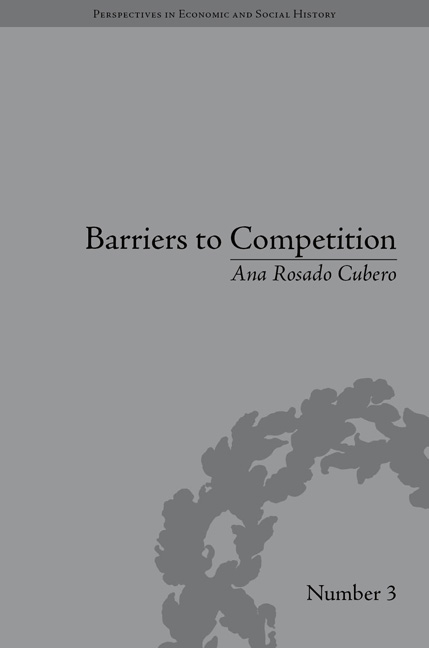Book contents
- Frontmatter
- CONTENTS
- Dedication
- Acknowledgements
- Introduction
- 1 Imperfect Competition in Economic Theory Before 1956
- 2 Barriers to Entry: the Late 1950s and the 1960s
- 3 The Harvard and Chicago Schools: Two Ways of Studying Barriers to Entry
- 4 Barriers to Entry in the 1970s
- 5 Barriers to Entry in the 1980s
- 6 Barriers to Entry: Current Analysis
- Conclusion
- Appendix: Tables
- Notes
- Works Cited
- Index
6 - Barriers to Entry: Current Analysis
- Frontmatter
- CONTENTS
- Dedication
- Acknowledgements
- Introduction
- 1 Imperfect Competition in Economic Theory Before 1956
- 2 Barriers to Entry: the Late 1950s and the 1960s
- 3 The Harvard and Chicago Schools: Two Ways of Studying Barriers to Entry
- 4 Barriers to Entry in the 1970s
- 5 Barriers to Entry in the 1980s
- 6 Barriers to Entry: Current Analysis
- Conclusion
- Appendix: Tables
- Notes
- Works Cited
- Index
Summary
Introduction
During the last years of the twentieth century and the first few of the twenty-first century the scientific production of barriers to entry pivoted on three main points. The first was built following the Cournot model, developing theoretical models about sunk costs and the use of excess capacity as an entry barrier, using the price as indicator of workable competition, pursuing the difference between real price and marginal cost (the benchmark of competitive price). The second line of research followed the path of market power exercised by control of market production or market share between incumbents; the indicator of this behaviour is found in the Herfindahl-Hirschman Index and the consequences should be quantified by the Federal Trade Commission. The third scientific development should be considered entry models; which, using game theory, was able to demonstrate how firms could deter entry of rivals, through strategic decisions and strategic advantages.
The dominant framework, and powerful for the antitrust authorities, should be considered the Structure-Conduct-Performance paradigm; under its lens were drawn up the Merger Guidelines in 1992, 1997 and 2000. After a convulsive decade like the 1980s, a deep breath was drawn during the 1990s and 2000s. The analysis of the last research about barriers to entry and noncompetitive markets regarding the four old main branches: excess of capacity, industrial concentration, advertising and entry models. During this time excess of capacity as a barrier to entry included economies of scale and special treatment of sunk costs, the main contribution of the New Chicago School to the antitrust framework.
- Type
- Chapter
- Information
- Barriers to CompetitionThe Evolution of the Debate, pp. 143 - 168Publisher: Pickering & ChattoFirst published in: 2014



